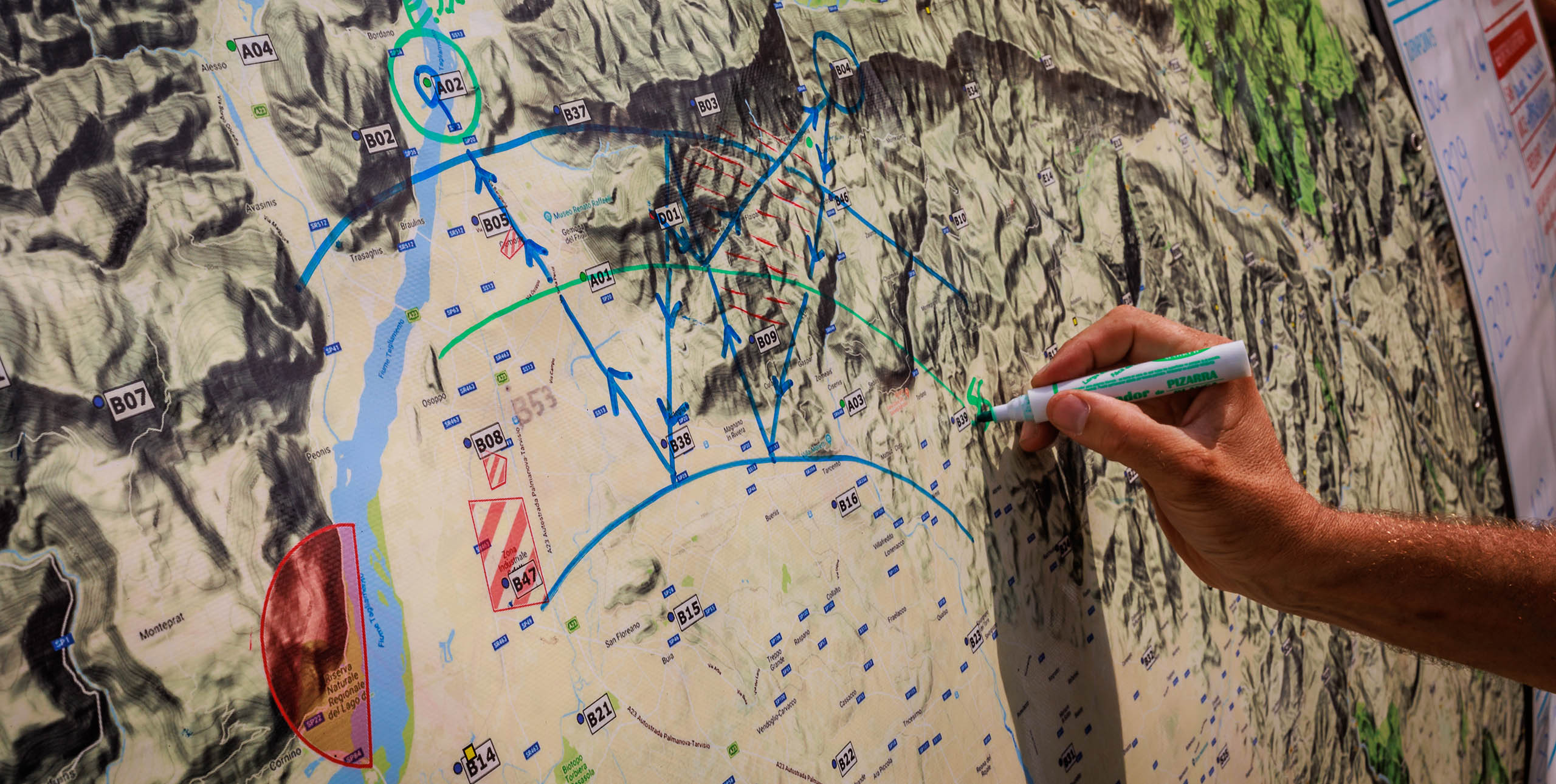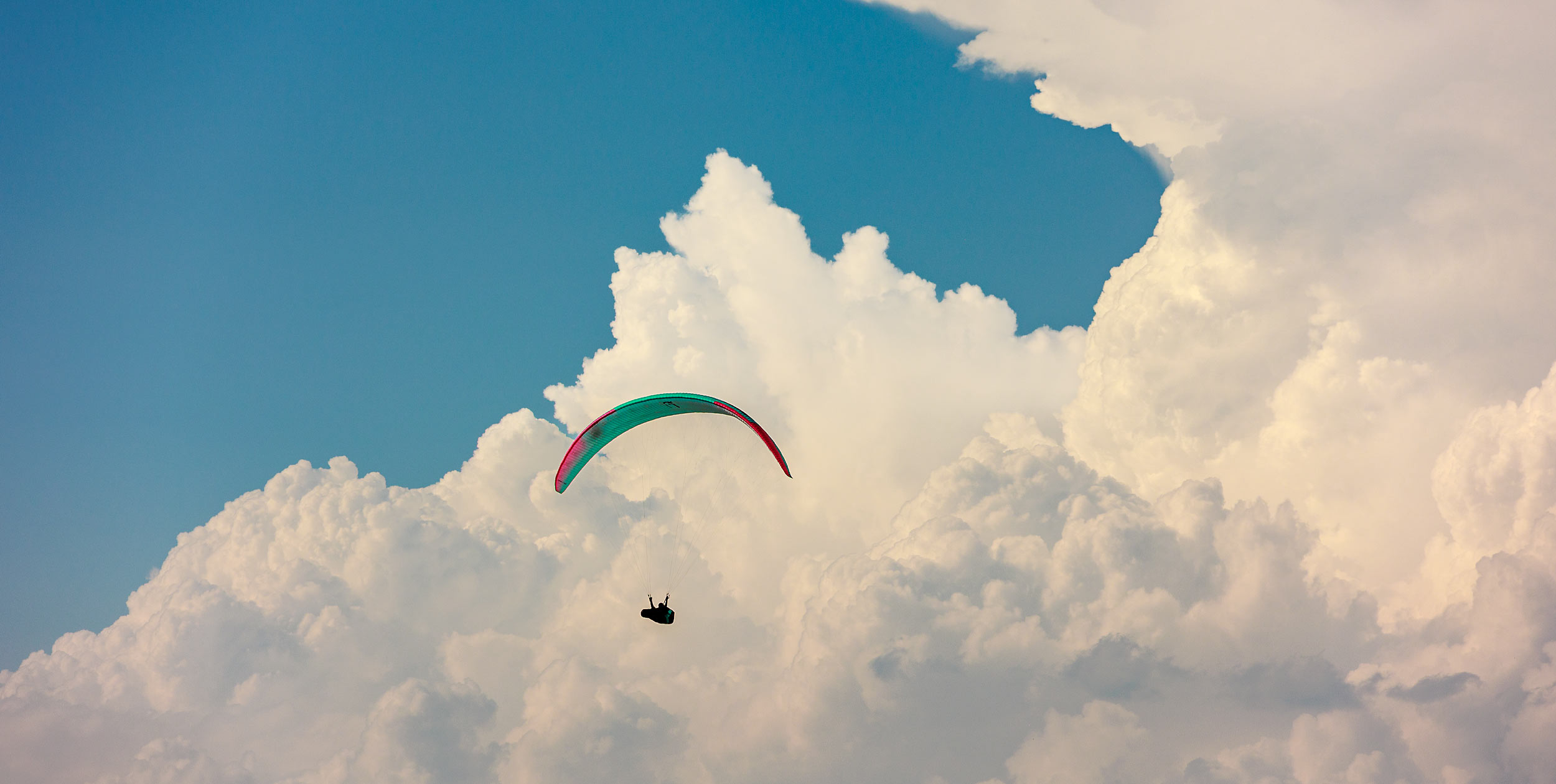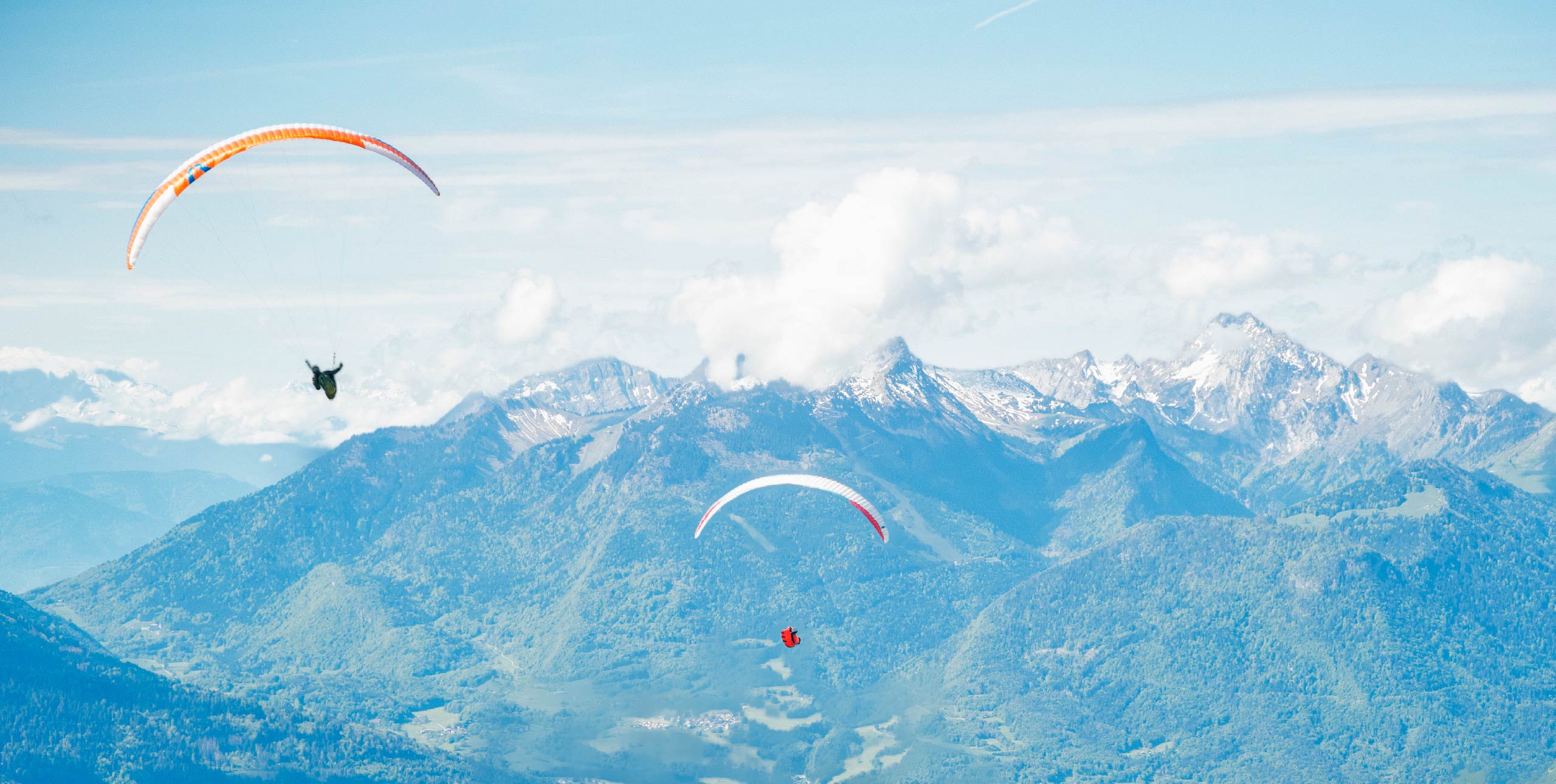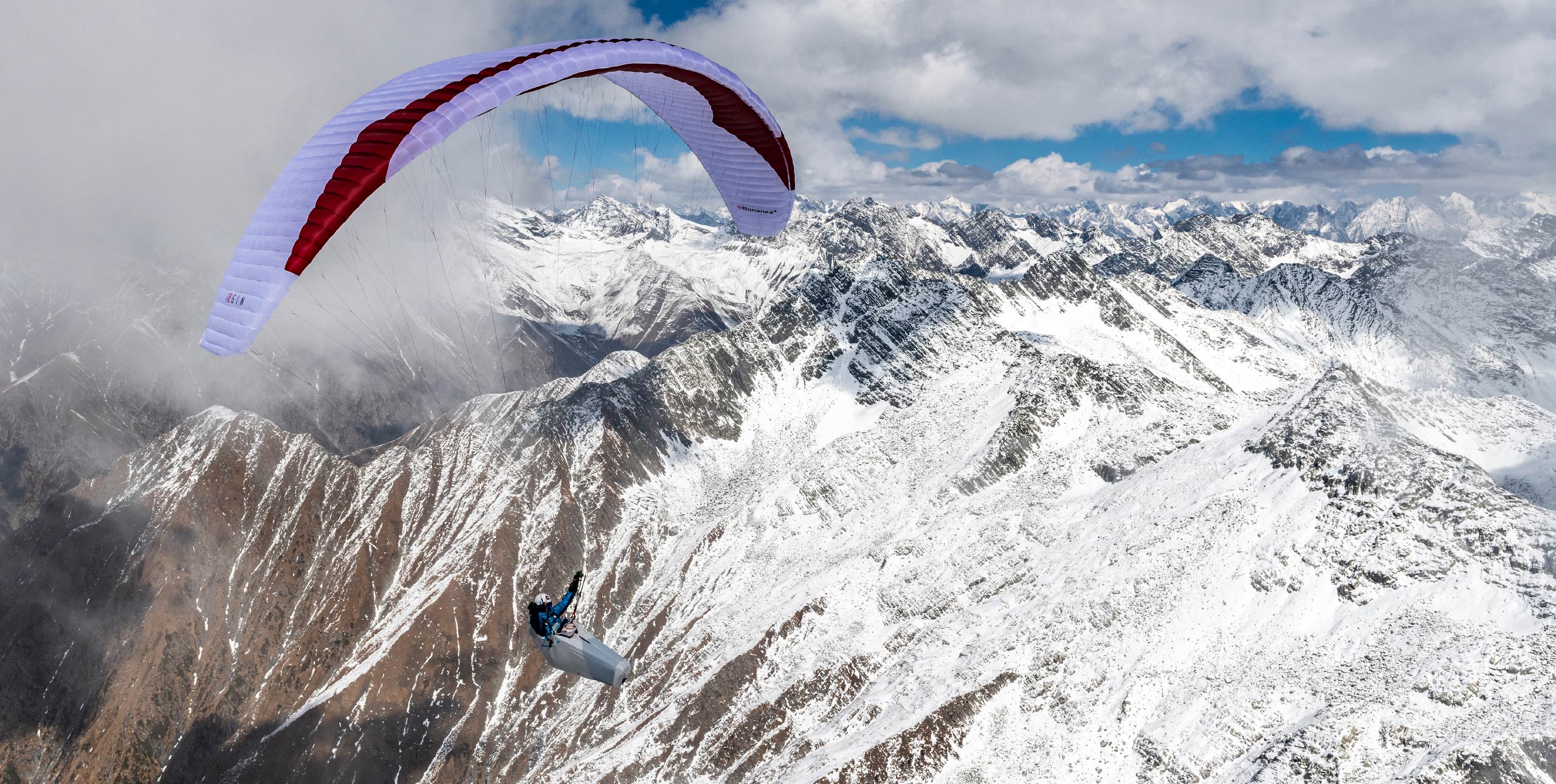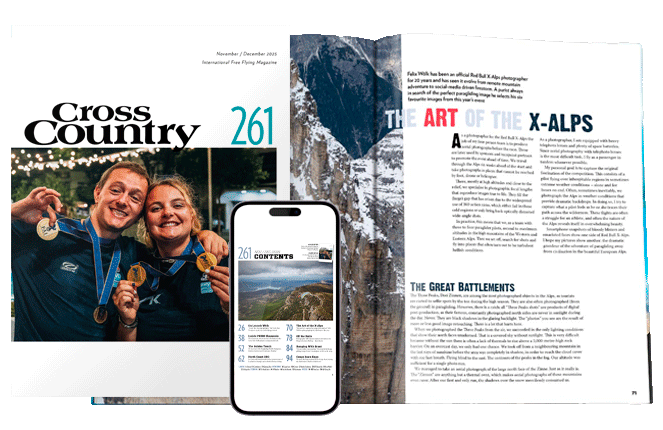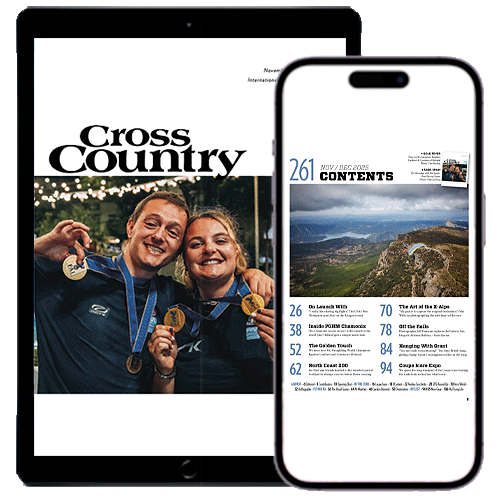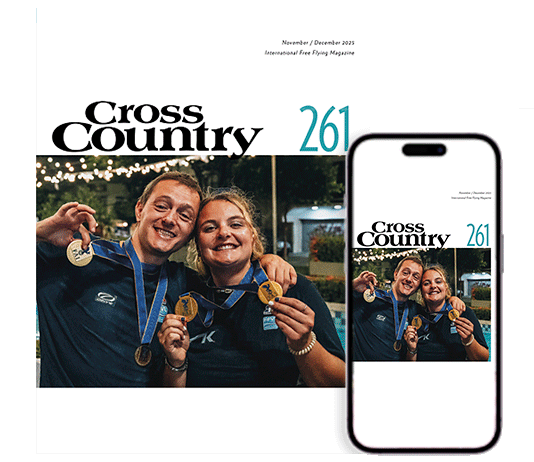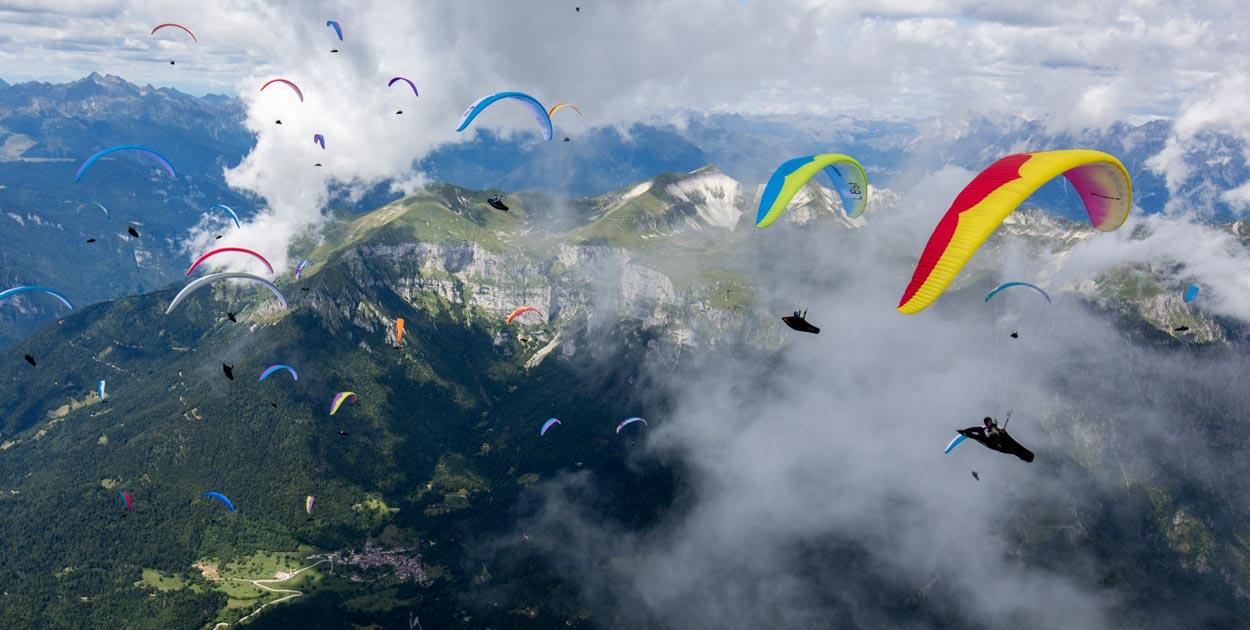
Regular Cross Country columnist Bruce Goldsmith has been flying since the 1980s and has been designing paragliders for more than two decades. He’s been British Paragliding Champion three times and was Paragliding World Champion in 2007, so he knows a thing or two about racing paragliders. These are his tips for competition pilots who are ready to start really racing, published in his book “Fifty Ways to Fly Better“.
By far the best way to start in competitions is to get to goal every time. If you can’t complete the task and get to goal every time, then there is no point in racing at all. Only when you are confident in your ability to get to goal is it worth starting to improve your times into goal by racing. Here are some top tips to help you master flying quickly.
STAY WITH THE LEAD GAGGLE
It’s highly advantageous to be flying with the best pilots in the race, so try taking off before them and placing yourself in the best position to be with them when the race starts, which is normally as high as possible at the edge of the start gate. Once the race starts, stick close to the top pilots as they head off along the course and watch what they do. At first you may only manage to stay with the lead gaggle for the first thermal. But, as you have to be in the race to win the race, you need to keep practising this until you can stay with the lead gaggle for the whole task.
PIMPING
Racing along up front with the lead gaggle can be quite a buzz. If you’re now flying fast enough to stay with the lead gaggle you’ve already achieved a lot. Many pilots take years to get to this stage and some never make it at all. In fact you are now at a stage of your competition career that many pilots never leave. They just stay with the lead gaggle as much as possible and never move on to make decisions themselves or take any risks. It’s possible to do quite well in competitions flying like this, but you’re not likely to win any, nor likely to make many friends if you only ever fly like this. Because ‘pimping’ – the act of trailing better pilots and feeding off their decision-making without ever contributing to the gaggle’s success yourself – is generally sneered at in competitions. However, everyone pimps to some extent – at the beginning it’s a great part of how you learn to stay with the gaggle. But, sooner or later you have to use the knowledge and confidence you’ve gained to the greater advantage of the pack and then others will pimp off you.
ORM
Once you’re good enough to hold your own in the lead gaggle you can start to implement the ORM, or ‘one right move’, a technique that I’m quite fond of. This technique involves staying with the lead gaggle for 90% of the time, all the time carefully watching every move they make to spot an error and hopefully spy a better route. Then, when the lead gaggle has gone off, you make the cleverer move and beat them all. Remember that you only need to do this once in a competition to win it, as long as you are right up there at the top on every other day. Pulling off a successful ORM requires you to first be able to spot the gaggle’s error; secondly you have to be confident and convicted enough in your decision to avoid the gaggle drag yourself and break away from the pack; thirdly you have to have the skill and continued confidence to go it alone, possibly all the way to the goal line.
CLIMB FAST
The best way of racing is of course to climb fast. You gain much more time by climbing fast, than by gliding fast. Lots of pilots find a small weak core and are content to climb in it, but flying fast is all about flying in the best lift available. If you’re climbing in 2m/s and someone else is in a 5m/s pumping thermal nearby then you have to either get in the stronger lift immediately or accept you’ll get left behind. A successful comp pilot is searching and observing all the time to make sure nobody ever out-climbs them, not even a bird or a plastic bag.
FLY WITH THE GAGGLE
Much of competition flying is about flying in gaggles. There are both good things and bad about gaggle flying, so let’s start with the good. When you fly in a gaggle your search power is increased. A good gaggle will spread out and cover a wider area of the sky, which is a major help when looking for elusive thermals. Being in a gaggle is especially useful if the thermals are weak and far apart. Gaggles are particularly useful in flatland flying because the location of thermals is less predictable. In weak conditions a gaggle can help you find the only thermal and can therefore help you to stay up. In stronger conditions the gaggle can help you find the best core and thus help you climb faster.
However, gaggle flying means you are compromised as well. You can’t just fly wherever you want, as with so many pilots in close proximity, the chance of collision is high. Instead you have to join the communal merry-go-round as it ascends as one mass.
Once you’re settled in the gaggle study all the gliders around you and try to anticipate their moves so you are able to keep yourself in clean air if they turn toward to you. Look for anyone climbing faster than you, particularly from below. If you spot someone in better air adjust your circling to take you into their part of the thermal. If there’s enough room you may even get an extra 360 in it and gain valuable height on the others. Even though your ability to move freely within the thermal is compromised, with so many good pilots in one thermal the gaggle is unlikely to ever lose the climb. Unless you have a task winning ORM up your sleeve it’s worth sticking with it.
UNDERSTAND THE QUALITY OF THE GAGGLE
But be warned all gaggles are not equal. The quality of a gaggle is only as good as the quality of the pilots in it.
This means there are slow gaggles as well as fast gaggles, and obviously the lead gaggle, the one you want to be in, is always the fastest gaggle. The lead gaggle in any competition will both climb faster and glide faster than the other gaggles. The pilots in the lead gaggle are also more adventurous and will do more searching thus finding the strongest lift quickest.
BEWARE OF GAGGLE DRAG
Conversely, slower gaggles can suffer from what is known as ‘gaggle drag’. Less skilled or experienced, the pilots in the slow gaggle may be indecisive and hang on in weak lift or not leave the thermal quick enough when it tops out. Once you are in a slower gaggle it’s very difficult to leave the gaggle behind and leapfrog forward to the faster gaggles in front. The best way to learn to fly faster is to get into the lead gaggle and then try to stay with it.
KNOW WHEN TO RACE
Once you’re a good competition pilot, who’s learnt to race efficiently, and can get to goal nearly every time. The final stage in your apprenticeship is knowing when to race. The obvious answer is to only race when you’re certain you’ll not go down. Obvious, yes, but the trick is knowing when you’re definitely not going to go down.
The risk of going down is less the higher you are, so race fast when you’re high and slow down when you’re low. If you are so low that you’re on the point of landing then stop racing completely and work at just staying in the air. It sounds simple, but I’ve seen many a hot-headed pilot race themselves all the way into the ground when they should have slowed down and just stayed airborne.
ANTICIPATION OF WHAT’S AHEAD
Look at the weather, the terrain and the task. If there’s a sheet of cirrus coming in then you’ll need to be high and prepared to slow down as the shadow arrives. If there’s a crux move like a difficult valley crossing or an unavoidable blue hole ahead, you probably want to slow down and gain height too. How far you are down the course matters too. If you are on final glide to goal you don’t need any more thermals, so the risk of going down gets less the closer you get to goal. Only if there’s a clear line of thermal producing terrain ahead, that you are confident you will find thermals all along, should you be in full race mode.
Switching instinctively between your two flying modes – race and survival – can be what makes a great competition pilot.
The winning pilot in a task is normally the one who sticks with the lead gaggle the entire task before making an ORM right at the end to outfox his competitors or who times their final glide to utter perfection and leaves the last thermal at exactly the right height. But be warned, leading out too early can be a very expensive mistake, as many have found.


